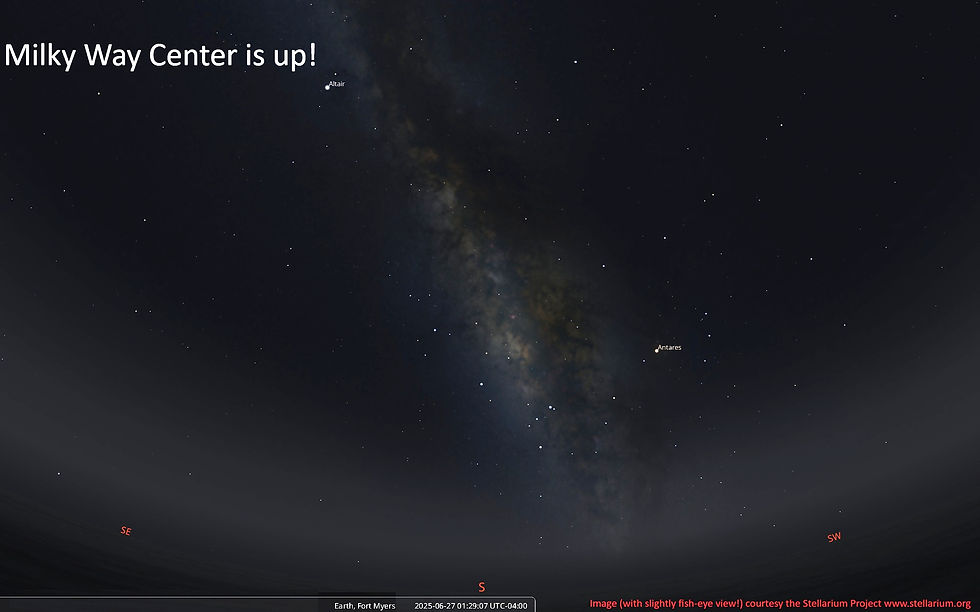What's Up in SWFL Skies: May the Meteors Be With You!
- heather92475
- May 1, 2024
- 2 min read
Updated: May 14, 2024
Moon Phases 3Q new 1Q full 3Q
May 2024 1 7 15 23 30
May 4th-5th: May heralds one of two annual meteor showers that are associated with the messy, grit-strewn orbital path of Halley's comet. These little bits of space grit zip through our predawn skies each year in May, whereas the Orionid (the other Halley-related meteor shower) meteors arrive in October. Each year as we orbit the Sun, Earth crosses through Comet Halley's orbit twice: once in May and again in October. It's a broad trail: the 2024 Eta Aquariids have been encountering our atmosphere since mid-April, but the shower will get stronger this week until its "peak," with the highest concentration of meteors likely to be seen on the nights of May 4th and 5th into the pre-dawn hours of Sunday, May 6. This is close to "new moon," so moonlight won't mess with your view of streaks of light in our skies. Also, due to interactions between the debris trails and the gas giant Jupiter's gravity, this year we are expected to encounter a "clump" of debris giving rise to a better-than-average showing of meteors (maybe 30 per hour). Look above your east-southeastern horizon in the midnight-to-5 am timeframe for best results, assuming the weather is clear and your southern sky is not full of artificial light or obstructions! Remember, there will still be eta Aquariids after the 6th, just not as "peaky." The next "big" meteor shower after this will be the Perseids, in August. NOTE: If it's too cloudy for meteor watching, you might watch some of the shower on the live feed from the Subaru Telescope on Mauna Kea, on the Big Island of Hawaii.
The Morning Planet Lineup (plus the Moon)
Before dawn on the 2nd, a beautiful lineup of planets will grace the east-southeastern skies: highest up and farthest to the south will be the Moon, a fat waning crescent with the center of its curve pointing toward the planets: Saturn is next - a little farther east and down a bit, then Mars, and finally Mercury, just above the eastern horizon.

Venus will eventually rise as a shining dot along that same line, a little north of east, but it's getting so close to the Sun in our sky that the dawn glare (and blue sky) will be blotting out everything else except for the Moon by that time!
May 9th - Mercury at Greatest Western Elongation. Mercury will appear to "turn the corner" in its orbit of the Sun, appearing at its greatest western elongation on May 9, 2024. If you observe Mercury with a telescope on that morning, you will see it 64 percent illuminated - anything more than half-lit and less than full is called a "gibbous" phase. Remember, it's changing its position fast! By the third week of June, it will be an early-evening object.





CM88 là địa chỉ cá cược trực tuyến đáng tin cậy, nổi bật với giao diện hiện đại và nhiều ưu đãi hấp dẫn cho thành viên. Website: https://cm88.law/
BitLife encourages players to think strategically to achieve their ideal life goals. Choosing the right learning path, investing wisely financially, building positive relationships and developing personal skills are all factors that contribute to a successful life in the game.
ChatGPT said:
The Eta Aquariids sound amazing this year — I love that you even mentioned the live feed option from Hawaii for those Pokerogue who can’t catch them in person!